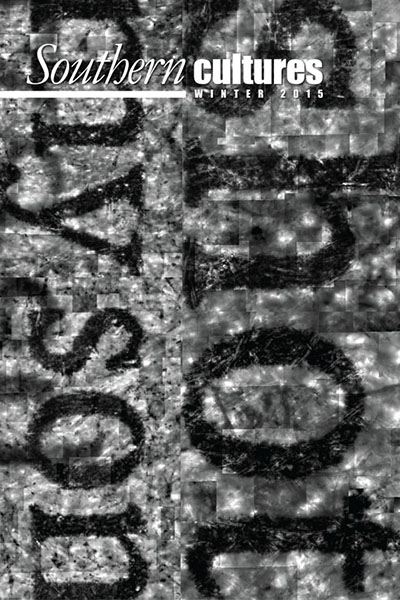“If the articles in this issue resonate with recent events, it’s less a choice or a coincidence than a sharp reminder that enduring themes in southern culture do not easily fade.”
It’s a peculiarity of quarterly publishing that Southern Cultures is rarely of the moment. Every issue must be ready for the printer about four months before subscribers ever see it. The result is that we can never select articles based on their immediate newsworthiness, and most of the time, “Front Porch” cannot discuss current events in a timely fashion. To make the best of things, we aim for the timeless over the topical.
So as I write, it is late July of 2015, and the South has been so much in the recent news that departure from custom seems mandatory. Most conspicuously, the killing of nine black worshippers in Charleston’s “Mother Emanuel” AME Church, allegedly by an impassioned young racist who draped himself in the flag of Robert E. Lee’s army, has sparked national horror at the enduring power of the South’s oppressive symbols. When surviving congregants drew on the deepest wells of their evangelical faith—familiar to most black and white southerners, whether current churchgoers or not—to forgive the accused killer before he was convicted of anything, startled Americans saw a side of southern culture they might earlier have dismissed.


